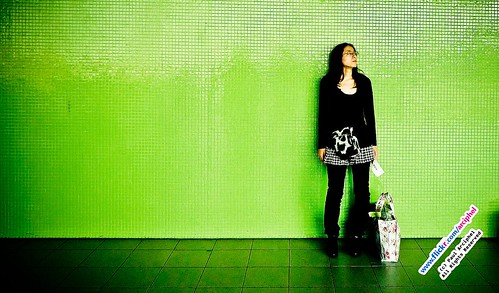If you’re one of those (like me!) who joined the mad rush for a Panasonic Lumix DMC–LX3 this Christmas season, you’d want to upgrade it to the latest firmware, now at version 1.1. Not that there was anything wrong with the older firmware, but updates like this one make sure everything is right with your device. It takes just a few minutes to finish the update and all you need is an SD card and a fully charged battery. And your LX3 of course.
Nikon D3X now official
Yes, what was just a rumor a few days ago is now an official camera — the Nikon D3X. We had most of the specifications right since Nikon basically gave everything away from the very beginning, except of course for the “official news” tag. It will be everything we’d want in a top–level SLR, and then some. Here’s more of the specs as listed on DCResource:
- 24.5 effective Megapixel, full-frame CMOS sensor
- EXPEED image processing system
- Supports all Nikon F-mount lenses; DX-format lenses will have a 1.5x focal length conversion ratio
- Ultra-rugged body resists dust, moisture, and shock; shutter rated to 300,000 cycles
- 3-inch LCD display with 920,000 pixels; live view supported
- Optical viewfinder has 0.7x magnification and 100% coverage
- Full manual controls (obviously)
- ISO range of 100 – 1600, expandable to 50 – 6400 (yes, that’s a lot smaller than on the D3)
- 51-point autofocus system, with 3D subject tracking
- Can shoot continuously at up to 5 fps in FX-format, 7 fps in DX-format
- Numerous RAW formats supported (12-bit, 14-bit, compressed, uncompressed, etc)
- Virtual horizon (from D3) can now be superimposed over live view
- Active D-Lighting improves image contrast as the photo is taken
- 5:4 aspect ratio allows for easy 8 x 10 shooting
- Dual CompactFlash Type II slots (UDMA-enabled)
- HDMI output
- Optional GPS and wireless transmitter
- Uses EN-EL4 or EN-EL4A battery; takes a whopping 4400 shots per charge
- Shipping in December for under $8000
With the D3 and the D3X at the top of Nikon’s lineup, they’ve now got two full–frame cameras catering to the needs of sports photographers that require fast frame rates and a high–resolution variant for portrait shooters and fashion. This combo appears better than Canon’s 1Ds + 1D pair, which might suggest that the 1.3x crop factor on the quick–shooting 1D series may soon be a thing of the past. If I were Canon that’s what I’d do.
Lens cap mod for the Lumix LX3/D-Lux 4

Shooting with the Lumix LX3 for the past few days has been really fun, though one thing I noticed is that the traditionally–styled lens cap limits your quick draw speed for street shooting. Unlike other compact point and shoots, the Lumix LX3 and D-Lux 4 use lens caps that you manually remove instead of automated little metal slits that retract by themselves. But there’s a solution: you can use the Roch LC-1 lens cap! WIth a bit of clever hacking, it can be your quick–draw lens cap.
And by now, if you’re very much into this Lumix LX3/D-Lux 4 craze, you might to consider this: the Titanium D-Lux 4! But at the rumored 1,400 USD, I think they’re pushing it.
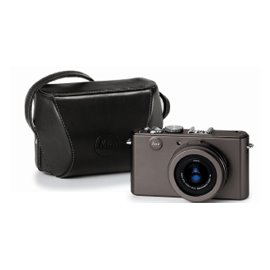
The Lumix LX3 rocks!
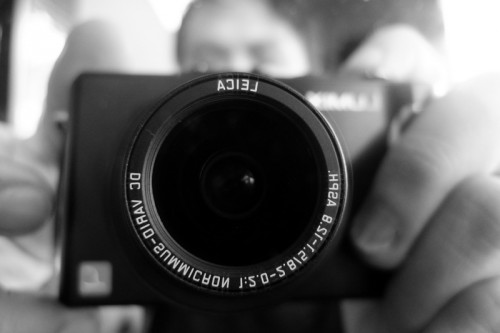
I tried hard to resist buying a new camera, but I guess since it’s almost Christmas I’ve got a perfect excuse. So I bought the camera that’s been the favorite serious compact the past few weeks: the Panasonic Lumix DMC-LX3!
The sample photos I’ve been running into just made it harder, it was the camera I’ve been looking for, the one I can carry with me when I don’t to lug around a heavy digital SLR. The 24-60mm lens is performs well despite the short range. At 24mm, its aperture maxes out at f/2.0, making it perfect for natural light shooting. At the 60mm end, it’s still at f/2.8 and with the built–in optical image stabilization, very much usable. This is the compact digicam that you’d love using for shooting without a flash.
Image quality is lovely and the built–in “film modes” produces old-school black and whites as well great–looking color photos. Heck, you can even make it produce lomo–like ultra–saturated snaps that pop!

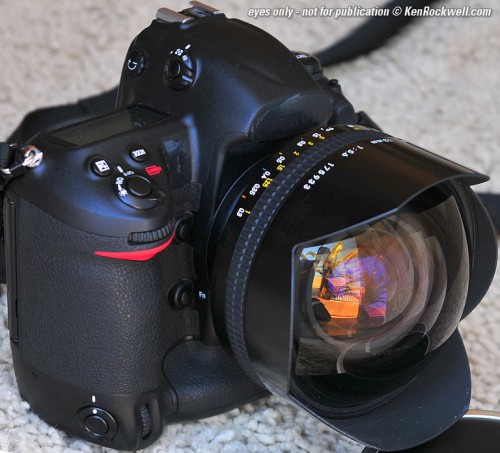
News of a Nikon D3X, an update to the class–leading Nikon D3, has been making the rounds in photography forums the past few days. Ken Rockwell tells us about this with a photo of a cloaked Nikon camera which may be the new D3X. Most likely, the camera in the photo is a D3 but the D3X rumor should be true nonetheless.
Here’s the rumored specifications of the new camera:
- 24.5 MP FX.
- ISO 50 ~ 6,400.
- Live View.
- 5 FPS (7 FPS in DX crop).
- Announce date: 01 December 2008.
- Ship: Early 2009 (est.).
- Price: $5,500 (est., USA).
Overall, it is basically the same solid Nikon D3 but with a 24 megapixel imaging sensor, putting it at par with Canon’s full–frame digital SLRs. It’s December 1 now here in the Philippines and we should be hearing more about this in the next few hours — if the rumors are true.
Okay, these are not the first photos from the LX3 that you’ll see, but these are the ones that will make you consider buying it.
The photos are linked to their photographers, all credits to them. Wow, these makes me really want to get an LX3.
Panasonic Lumix DMC-LX3
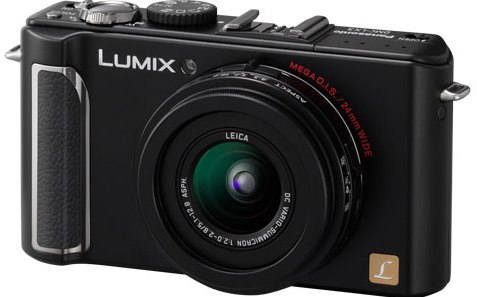
Everybody wants this camera: the Panasonic Lumix DMC–LX3. Not too long ago, the Ricoh GR and GX serious compacts made it into the bags of discerning enthusiasts. Now here’s a new camera that simply does the job well without the made–for–marketing features of its competitors. With a more than adequate 10 megapixel CCD sensor, the LX3 has a Leica 2.0-2.8 lens with an equivalent focal range of 24-60mm.
I’ve been trying to hard to resist the urge to buy this cam, and for the past few days I’ve been successful. Wish me luck as I continue to avoid another big spend. Now here’s some links to make you think about the Lumix LX3:
- Laurence Kim’s review (parts 1, 2, 3)
- DPReview’s take on the LX3
- PiPho’s thread on the LX3 (as reviewed by user Dave_D)
And if you’re wondering by now, the Lumix LX3 suggested retail price is USD $499 and it sells here in Manila in the 23-25,000 peso range, not bad at all. Unless of course you’d rather have a Nikon D40 for around 20k.
Compact digicams for SLR shooters
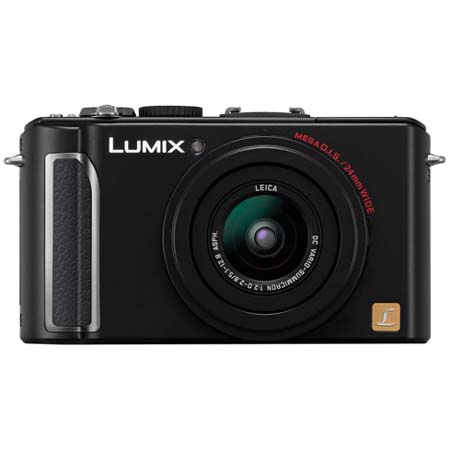
I know a lot of our readers are SLR shooters, and most likely not all of us enjoy lugging around a digital SLR everyday. It’s just not practical — which is why most of us look for a serious compact camera that works effectively for everyday use.
The Canon Powershot G10 and the Nikon Coolpix P6000 leads most models in this field, mostly because of the badges they carry. Good brand translates to good sales after all. Personally, I’d prefer the Ricoh Caplio GX200 I mentioned some time ago. It is a not–so–secret favorite of many compact shooters. Recently, the Panasonic Lumix DMC–LX3 has also been getting good attention. It’s just like the GX200 having a lens that sports a 24mm wide end, but only faster. It handles noise better too, somehow.
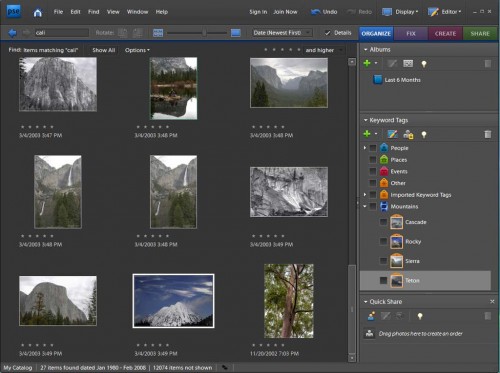
Buying a new camera these days usually comes with free software. If you’re lucky enough to get photo editing software to come with it, it will probably be Adobe Photoshop Elements. You won’t be getting full–version Photoshop, that’s for sure, but if you’re lucky you’ll have the more recent Adobe Photoshop Elements 7.
What’s impressive about this new version is that it inherits the feel of Photoshop Lightroom’s interface. Everything is easier to use, in a streamlined workflow.

Editing is straightforward and provides tools for commonly photo editing tasks.
There’s a full review over at PhotographyBLOG, perhaps Adobe Photoshop Elements 7 is what you need.
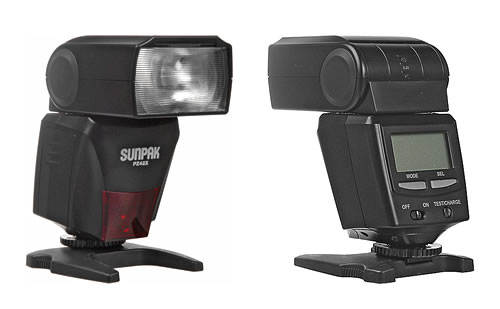
Considering a flash for your new digital SLR? Instead of getting the Nikon SB–600 or the Canon 430EX II, why not consider the Sunpak PZ42X flash?
The Sunpak PZ42X is a worthy alternative for SLR shooters looking for a dedicated flash. If you’re not after the techo–gizmo features found in more expensive models, this Sunpak might just do the job. I’ve personally tried one and it’s just as good as my Sigma EF–500 Super, but without the weight. I lose high–speed (focal plane) sync and multi–flash effects, but I rarely need them anyway.
For an everyday use flash, the Sunpak PZ42X gets the job done. It’s a lot cheaper than the Canon 430EX II and still a few dollars cheaper than the Nikon SB–600, just good enough for a budget–limited enthusiast.
List price for the three flashes mentioned:
- Sunpak PZ42X: $149.95
- Canon 430EX II: $279.99
- Nikon SB–600: $172.95
There are firmware updates for the just released Canon EOS–50D and the Nikon D300. If you’re shooting with one of them, be sure to check it out as it solves certain issues for both cameras. Of utmost priority is the fix for the 50D which reportedly has “Error 99” issues despite it being a very new camera.
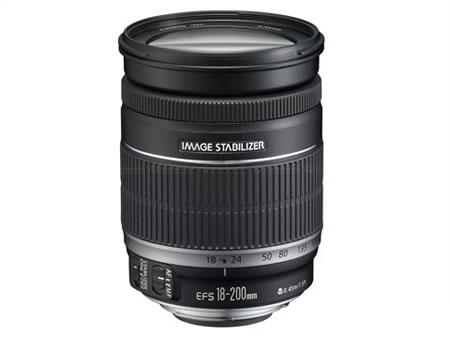
I’m sure a lot of us have been eagerly waiting for reviews of the Canon EF-S 18-200mm f/3.5-5.6 IS, now here’s the first one from DPReview!
The lens gets the “recommended” badge but with reservations. If you manage to read the complete review though, you’d realize that there are several compromises in this lens that would make you reconsider buying one. The cons they’ve mentioned will make you think twice:
- Poor sharpness across much of the frame at 18mm and wider apertures
- Pronounced barrel distortion at wideangle, and pincushion distortion around 50mm
- High levels of chromatic aberration at either end of the zoom range
At USD $700, maybe it’s a bit too much money for something so plain and ordinary? But then again, you get impressive range with extremely useful image stabilization. I’m sure this lens appeals to certain types of photographers, but right now I’m just not sure if I’m one of them.
Wondering what body organs to sell to buy yourself a Canon EF-S 18-200mm IS? ;) The new Canon superzoom reportedly goes for 34,000 pesos at Mayer’s, one of our favorite Hidalgo camera shops. Of course prices vary constantly, along with Mang Ramon’s mood, but you can always call them at 02.7337598 to check. If you can get through, that is.
Wondering what’s new with Adobe Photoshop Creative Suite 4? Photographyblog.com has a review of the latest version of the software, another significant step in the graphic tool that is in every photographer’s arsenal. Here are some of the noted changes in this version:
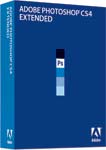
- User interface changes: Tabbed interface by default
- Masks & Adjustments panel: A separate panel for quick access to this set of tools
- Rotating, Panning, & Zooming: Revised behavior allowing for better control
- Compositing: Improved from previous version
- Seam Carving: A new approach to cropping/resizing photos
- Printing: Better integration and color matching with various brands of printers
- Camera Raw: New version adds features similar to Lightroom 2.0
- Bridge CS4: Numerous enhancements
It seems there’s a lot to like in the new version especially if you’re coming from a version older than CS3. Of course cost is still a major consideration as Photoshop is no piece of cheap software. Read their review for more details on Adobe Photoshop CS4.
- Photo samples (Site in Japanese)
- Photographyblog’s Canon EOS–50D review
- Roland Lim’s review of a production 50D, with various image comparisons against the 40D and the Nikon D3)

Yes, it’s now confirmed, the Canon EOS-5D Mark II is a real camera! After months (or was it years?) of speculation on how Canon would update the full–frame 5D, it is now finally here. Unfortunately, it’s not even close to the rumored 5D update we wrote about last March.
Highlights of this new camera:
- New 21.1 Megapixel CMOS sensor with improved EOS Integrated Cleaning System (E.I.C.S.)
- New Full HD 1080 resolution movie recording
- 3.9 frames per second continuous shooting
- High performance DIGIC 4 providing superb image quality
- Maximum 310 large JPEG images in a single burst with a UDMA card
- 3.0” VGA (920k dots) Clear View LCD
- ISO 100-6400 (expansion from 50 up to 25,600)
- 9 AF points + 6 Assist AF points
Not to be outdone by Nikon’s D90, movie recording is available at HD 1080p, besting the Nikon which maxes out at the not–too–shabby 720p setting. Certainly, most of the changes are evolutionary, except for the new CMOS sensor which stands out, almost doubling the 12–megapixel model it replaces. And with sensitivity expansion reaching ISO 25600, the 5D Mark II will certainly be in the bags of Canon–shooting pros pretty soon.
Canon EOS-50D photo samples

Are you interested how the Canon EOS-50D’s 15 megapixel DIGIC 4–powered imaging capability performs? You’d want to see these just released samples from a pre–production unit, tested at various ISO sensitivities. I’ve posted above a crop of a photo taken at ISO 12800, two stops above the maximum sensitivity of the 40D it replaces. The results are promising indeed and it looks like the 50D will be another must–upgrade for most Canon photographers.
Tamron 10-24 ultrawide
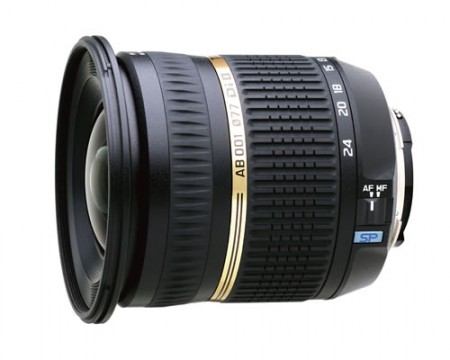
Tamron has just announced the Tamron SP AF 10–24mm f/3.5-4.5 Di II LD Aspherical (IF), a new ultrawide that should supersede the slower Tamron SP AF11–18mm F/4.5-5.6 Di-II LD Aspherical (IF) which they’ve offered as a wide–angle alternative for Canon and Nikon shooters for a while now.
The range for this ultrawide is better than similar offerings and is even better than the Canon EF–S 10–22 mm, one of the better ultrawide lenses for APS–C cameras. It also shares the same max aperture throughout the range, putting it in direct competition with the Canon lens. If it sells for much less than the Canon 10–22, the Tamron 10–24 should be a good seller especially if it inherits the excellent optical qualities of Tamron’s 28–75 and 17–50 f/2.8 zooms.
Full-frame Sony Alpha 900
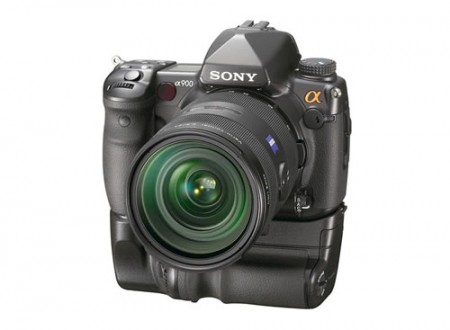
Now the digital SLR market is getting undoubtedly interesting. The recent announcement of a DSLR that can do high–definition videos in the Nikon D90 got everyone listening, and now we have the first full–frame camera for the Sony Alpha system, the Sony Alpha 900. This provides a full–frame option for Minolta/Konica–Minolta shooters as well as those betting on the Sony Alpha DSLR system. Not that I think there are many of those, but having a third full–frame capable system puts pressure on the rest of the market, surely making cheap full–frame DSLR cameras a reality in the next few years.
Sony’s venture into full–frame would make Canon and Nikon think twice about their products, making it no longer simply a technogical race, but also a price–driven battle. And since we know that Sony also sells their sensors to other manufacturers, it wouldn’t be far–fetched to see Pentax and Samsung with full–frame digital SLR cameras in the next few months.
And as if it matters in a big way, here’s the specs for the Sony Alpha 900:
- 24.6 MP 35mm format full-frame CMOS sensor (highest res in class)
- SteadyShot INSIDE full frame image sensor shift stabilization (world first)
- High Speed Dual Bionz processors
- Eye-level glass Penta-prism OVF, 100% coverage, 0.74x magnification
- 9 point AF with 10 assist points, center dual-cross AF w/2.8 sensor
- 5 frames per second burst, newly developed mirror box
- Intelligent Preview Function
- 3 User programmable custom memory modes on mode dial
- Advanced Dynamic Range Optimizer (5 step selectable)
- 40 segment honeycomb metering
- 3.0″ 921K pixel Photo Quality (270 dpi) LCD display, 100% coverage
- Direct HDMI output
- ISO 200-3200 (ISO 100-6400 expanded range)
- User interchangeable focusing screens (3 options)
- CF Type I/II and MS slots, LI-ION battery, STAMINA 880 shots
- Weight 850g (without battery, card, accs)
- New Image Data Converter SR software (includes vignetting control)
- New Vertical Grip
- Supplied with wireless remote control
- Magnesium Alloy body and rubber seals for dust and moisture resistance
- AF micro adjustment
- $2999.99 body price; available late October 2008
As always, DPReview gets the first stab on this camera with their preview of the Sony Alpha 900.
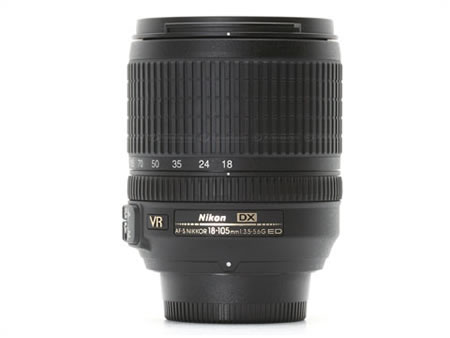
The AF-S DX NIKKOR 18-105MM F/3.5-5.6G ED VR is a new image–stabilized (using Nikon’s Vibration Reduction technology) zoom lens created as the kit lens for the new Nikon D90. On paper, it is a good lens with a long and usable range that will appeal greatly to first–time digital SLR buyers. The only thing that makes it look bad is the Nikon 18–200 VR of course.
Here’s more on the 18–105 DX VR:
- DX-format, high-power 5.8x zoom lens with focal length ranging from 18 to 105mm
- Broad picture angle range approximates the perspective of a 27-157.5mm lens on a 35mm-format film camera or Nikon FX-format digital SLR
- Covers diverse shooting situations from wide-angle landscapes and interiors to portraiture and medium-range sports
- Vibration Reduction assures sharper handheld pictures while shooting at shutter speeds up to three stops slower than would otherwise be possible
- Built-in Silent Wave Motor delivers quiet, swift autofocus with superior accuracy
- High-performance optical system featuring an ED glass element and an aspherical lens element realizes superior image reproduction capability
- The rounded 7-blade diaphragm opening renders out-of-focus elements more naturally
- Leather texture matches Nikon digital SLR’s body high-quality exterior design
No reports on pricing yet as it seems it will only be available as part of the D90 kit.
